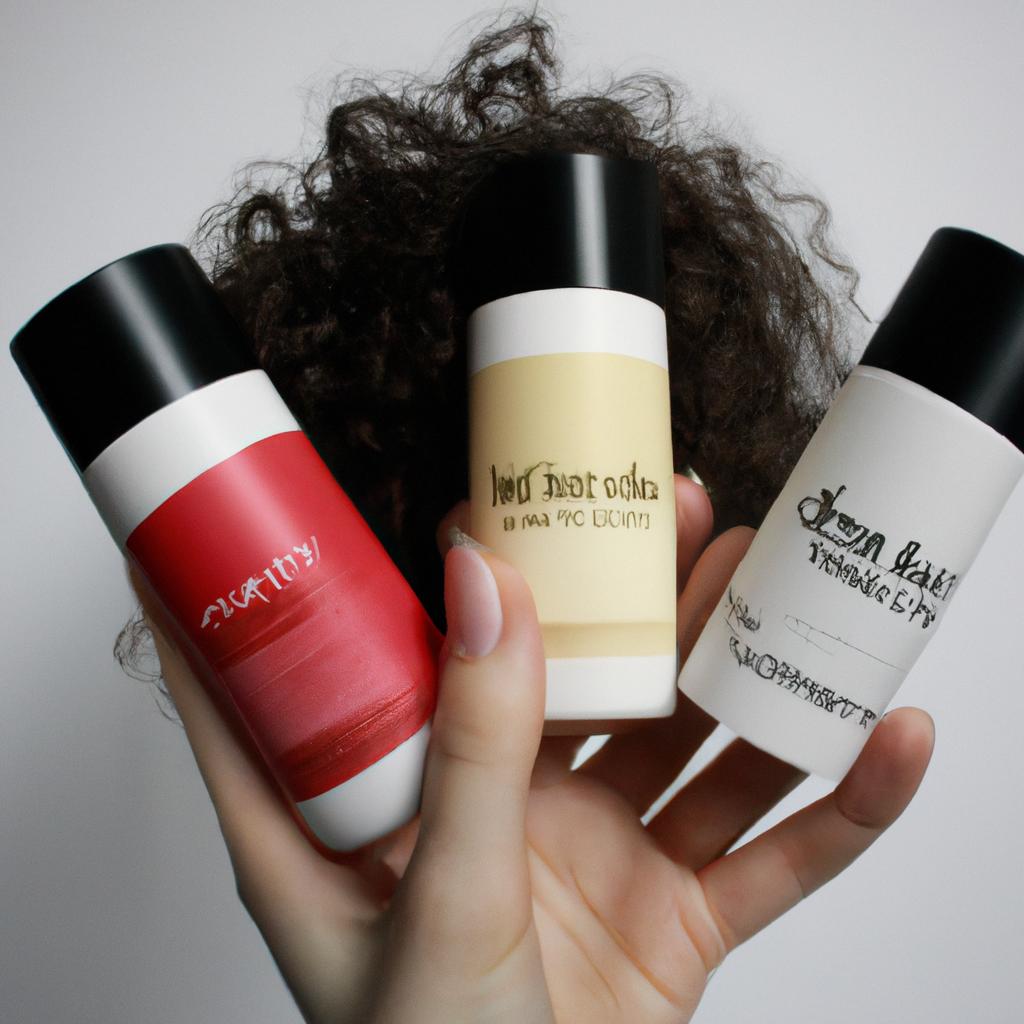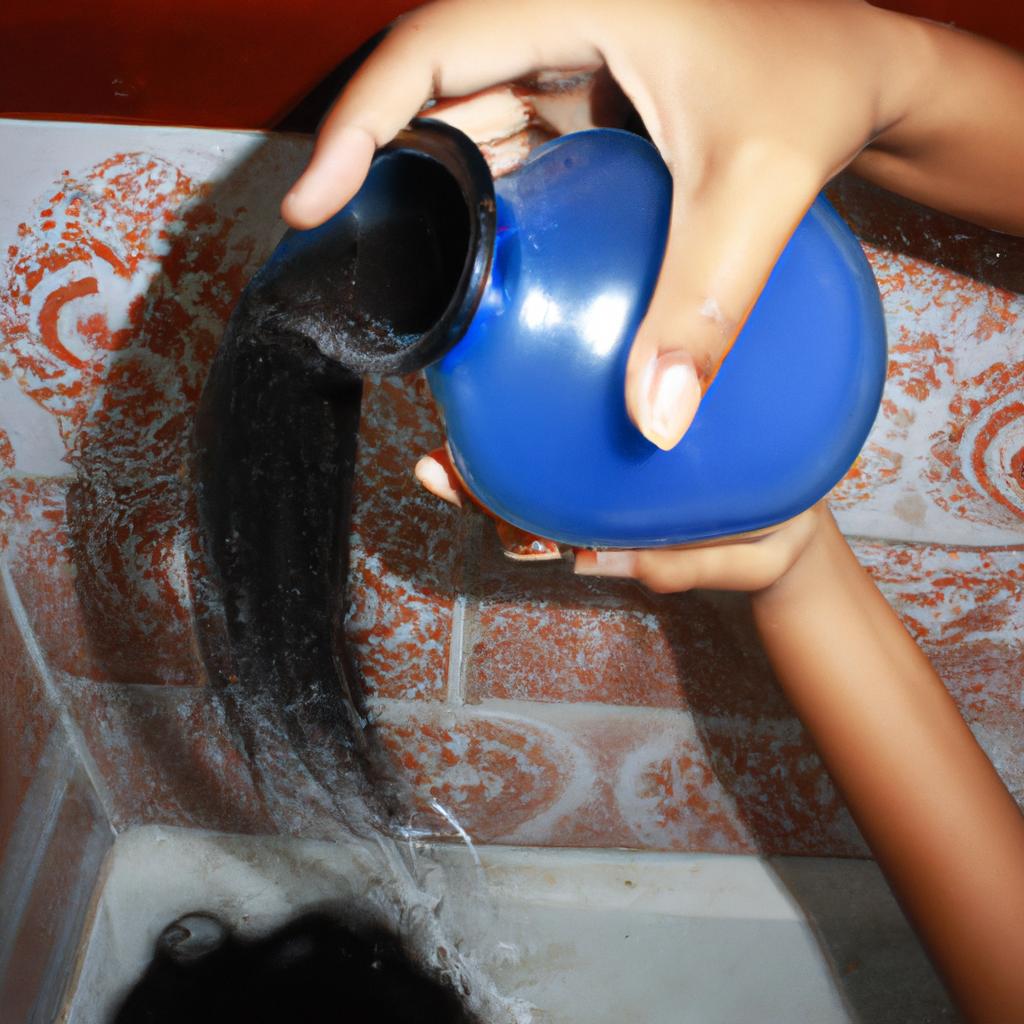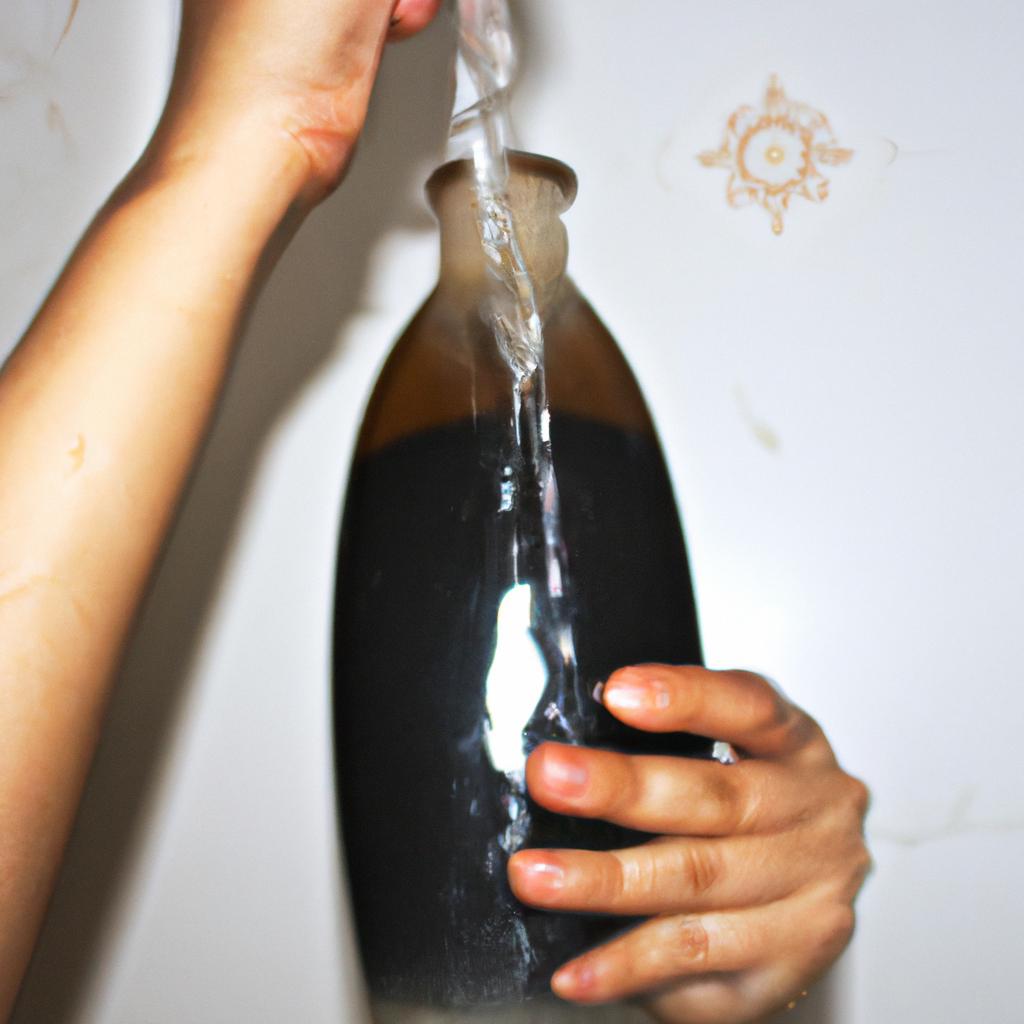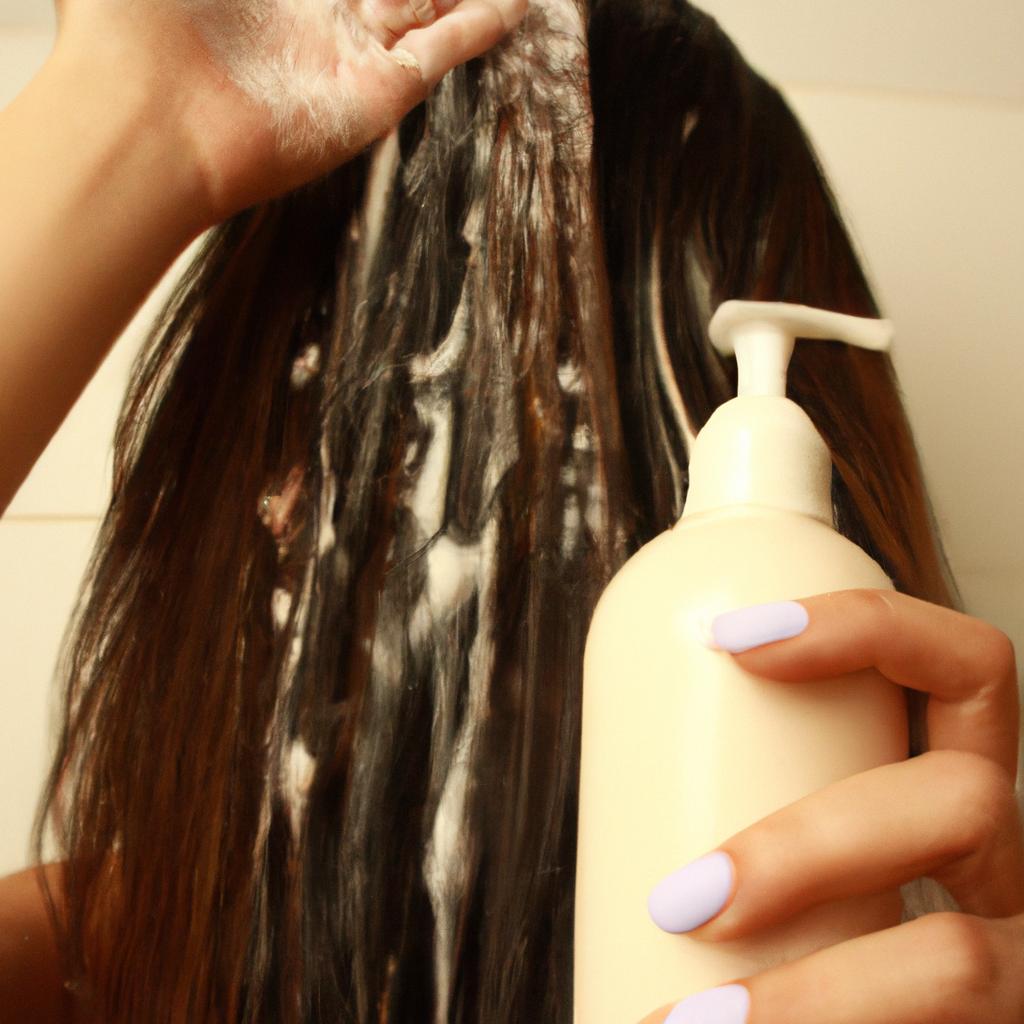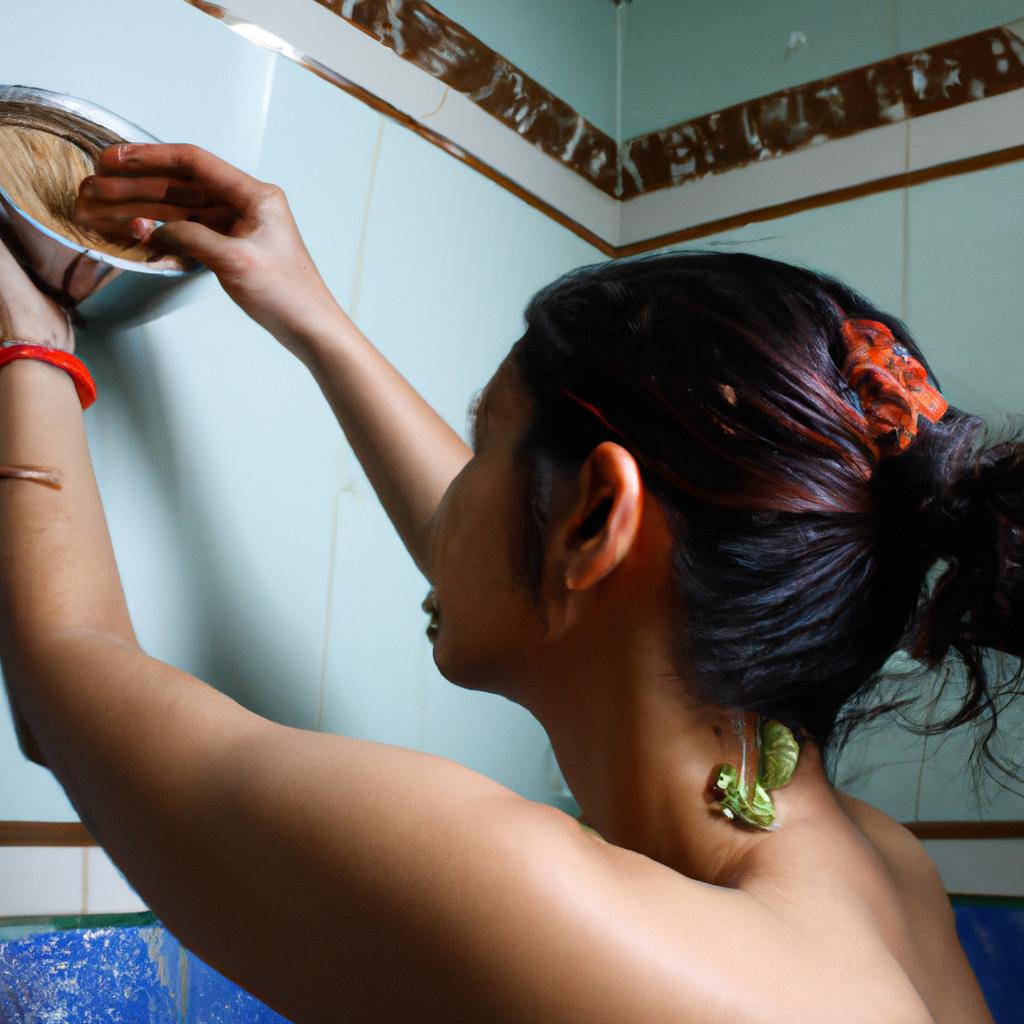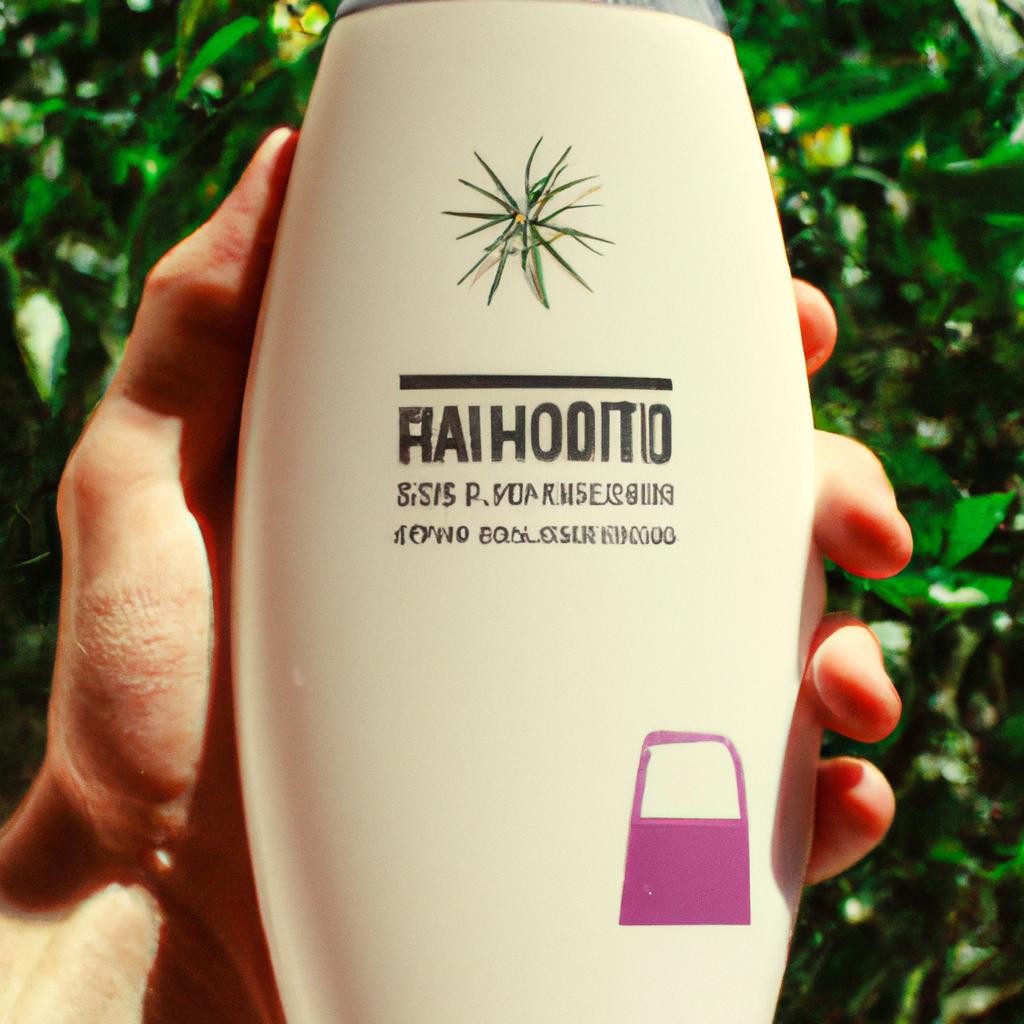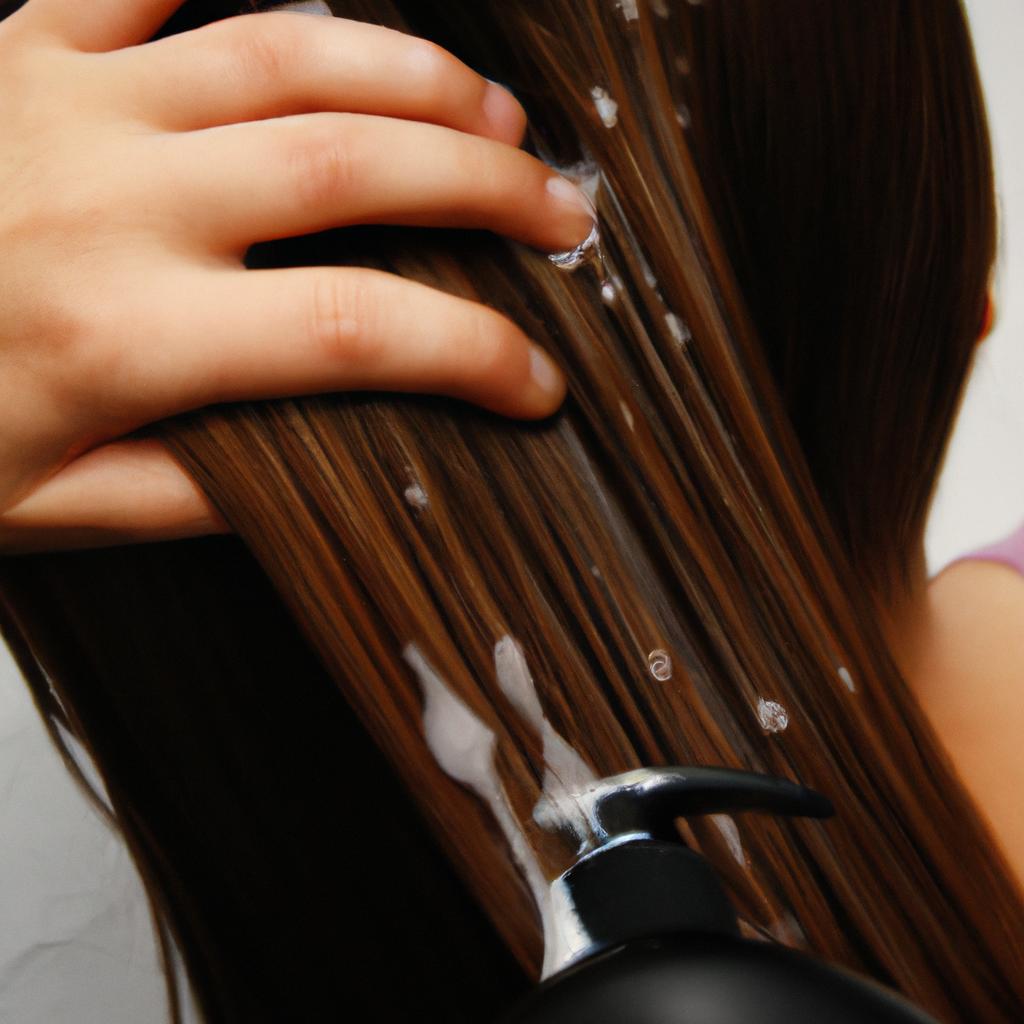Traditional hair care practices have been utilized by various cultures for centuries, often relying on natural ingredients sourced from the local environment. One such example is Indian traditional shampoo, which has gained recognition worldwide for its effectiveness in promoting healthy and lustrous hair. This article delves into the rich history of Indian traditional shampoo and explores the natural ingredients that contribute to its efficacy.
In recent years, there has been a growing interest in alternative methods of hair care that prioritize the use of organic and chemical-free products. Many individuals have turned to Indian traditional shampoo as an effective solution, drawn by its long-standing reputation for nourishing and revitalizing the hair. The formulation of this ancient remedy typically includes a combination of botanical extracts, herbs, oils, and other natural components carefully selected for their beneficial properties. Through examining these traditional ingredients and their specific benefits for hair health, we can gain insights into how this time-honored practice continues to thrive in modern times.
Ayurvedic principles in hair care
Imagine a scenario where someone is struggling with dry, damaged hair that lacks shine and vitality. They have tried various commercial shampoos and conditioners without much success. Frustrated by the lack of improvement, they turn to Ayurveda, an ancient Indian holistic system of medicine, for answers. This case study exemplifies the growing interest in incorporating traditional ingredients into modern hair care routines.
Ayurveda is based on the belief that there are three doshas or energies – Vata (air), Pitta (fire), and Kapha (earth) – present in every individual’s body, determining their unique constitution. Applying this principle to hair care, Ayurvedic practices aim to restore balance to these doshas through the use of natural ingredients specific to each person’s needs.
- Rediscovering age-old wisdom
- Embracing nature’s healing power
- Nurturing mind-body harmony
- Celebrating cultural heritage
Table: Benefits of Ayurvedic Hair Care
| Benefit | Description |
|---|---|
| Stronger Roots | Traditional ingredients nourish the scalp, promoting strong and healthy roots |
| Increased Shine | Natural extracts provide deep hydration, enhancing hair luster |
| Reduced Breakage | Herbal remedies strengthen strands from within, reducing breakage |
| Scalp Health | Oils enriched with herbs calm inflammation and improve overall scalp health |
Incorporating Ayurvedic principles into our daily hair care routine can yield numerous benefits. By focusing on natural ingredients tailored to our specific needs, we can address underlying issues such as weak roots or excessive breakage. Moreover, embracing traditional methods not only enhances our physical well-being but also fosters a deeper connection with our cultural heritage.
Transitioning seamlessly into the subsequent section about “Benefits of using Indian traditional shampoo,” we delve further into the advantages of incorporating Indian traditional shampoo in our hair care regimen.
Benefits of using Indian traditional shampoo
Ayurvedic principles in hair care have been followed for centuries, with Indian traditional shampoo being a popular choice among those seeking natural and holistic solutions. By incorporating various herbal ingredients, these shampoos offer numerous benefits for maintaining healthy hair. To better understand the advantages of using Indian traditional shampoo, let’s consider a case study.
Imagine Sarah, a young woman struggling with dry and damaged hair due to excessive styling and exposure to harsh chemicals. Seeking an alternative to commercial shampoos, she turns to Ayurveda and starts using an Indian traditional shampoo made from natural ingredients such as neem, bhringraj, hibiscus, and amla. This change in her hair care routine leads to noticeable improvements over time.
The use of Indian traditional shampoo offers several key benefits:
- Nourishment: The natural ingredients present in these shampoos provide essential nutrients that help nourish the scalp and promote healthier hair growth.
- Strengthening: Certain herbs like bhringraj or brahmi are believed to strengthen the hair follicles, reducing breakage and preventing premature graying.
- Scalp health: Ingredients like neem possess antibacterial properties that can combat dandruff and other scalp conditions.
- Hair shine: Hibiscus is known for its ability to add luster and shine to dull hair strands.
To further illustrate the effectiveness of these natural ingredients found in Indian traditional shampoo, consider the following table:
| Ingredient | Benefits | Key Properties |
|---|---|---|
| Neem | Antibacterial properties | Cleanses the scalp |
| Bhringraj | Strengthens hair follicles | Reduces breakage |
| Hibiscus | Adds shine | Enhances color |
| Amla | Promotes hair growth | Provides nourishment |
As we can see from this example and the benefits listed above, Indian traditional shampoo is a valuable addition to anyone’s hair care routine. By incorporating natural ingredients like neem, bhringraj, hibiscus, and amla, these shampoos offer nourishment, strengthen hair follicles, enhance scalp health, and add shine to dull hair.
Transitioning into our next section on “Key ingredients in Indian traditional shampoo,” we will explore some of the specific herbs used and their individual properties for promoting healthy hair.
Key ingredients in Indian traditional shampoo
Indian traditional shampoo is known for its natural ingredients that provide numerous benefits to the hair. By incorporating these ingredients into their hair care routine, individuals can experience healthier and more lustrous locks. Let’s explore some key benefits of using Indian traditional shampoo.
Firstly, one notable benefit is that it helps control excessive oiliness in the scalp. For instance, imagine a scenario where an individual has been struggling with oily hair, making it difficult to maintain a fresh and clean look throughout the day. By using Indian traditional shampoo infused with ingredients like neem or shikakai, which possess strong cleansing properties, they can effectively combat excess oil production and achieve a balanced scalp.
Furthermore, Indian traditional shampoo also promotes hair growth and reduces hair fall. Consider an individual who has noticed increased hair shedding or thinning over time. Using a shampoo enriched with herbs such as Brahmi or Amla can help stimulate blood circulation in the scalp and nourish the hair follicles, leading to stronger roots and reduced hair loss.
In addition to controlling oiliness and promoting hair growth, Indian traditional shampoo offers deep conditioning effects. The inclusion of ingredients like hibiscus or fenugreek provides intense hydration to dry and damaged strands, leaving them soft, smooth, and manageable.
The following bullet point list illustrates some emotional responses associated with using Indian traditional shampoo:
- Increased confidence due to improved appearance
- Enhanced self-esteem from having healthy-looking hair
- Sense of connection to cultural heritage through traditional practices
- Enjoyment derived from experiencing natural remedies firsthand
Moreover, here is a three-column table highlighting four common natural ingredients found in Indian traditional shampoos along with their respective benefits:
| Ingredient | Benefit |
|---|---|
| Neem | Controls dandruff and soothes irritated scalp |
| Shikakai | Strengthens roots and adds shine |
| Brahmi | Promotes hair growth and strengthens strands |
| Amla | Nourishes hair follicles and reduces greying |
In conclusion, Indian traditional shampoo offers a range of benefits for maintaining healthy hair. Its unique blend of natural ingredients effectively controls oiliness, promotes hair growth, and provides deep conditioning effects. By incorporating these shampoos into their routine, individuals can experience improved confidence, self-esteem, and a sense of connection to their cultural heritage. Next, we will explore the role of herbs in promoting overall hair health.
Transitioning seamlessly to the subsequent section about “Role of herbs in promoting hair health,” let us delve further into how specific herbal extracts contribute to nourishing and revitalizing our precious tresses.
Role of herbs in promoting hair health
Key ingredients in Indian traditional shampoo have been used for centuries to promote healthy hair. One example of these natural ingredients is amla, also known as Indian gooseberry. A case study conducted on individuals using amla-infused shampoo showed significant improvements in their hair texture and reduced hair fall.
These traditional shampoos contain a unique blend of herbs that work synergistically to enhance hair health. Some common herbs found in Indian traditional shampoo include:
- Shikakai: Known as the “fruit for hair,” shikakai has natural cleansing properties that help remove dirt and excess oil from the scalp without stripping it of its natural oils.
- Reetha: Also called soapnut, reetha acts as a foaming agent and effectively cleanses the hair while maintaining its pH balance.
- Brahmi: This herb nourishes the scalp, strengthens hair follicles, and promotes overall hair growth.
- Bhringraj: Often referred to as the “king of herbs for hair,” bhringraj helps prevent premature graying, improves blood circulation to the scalp, and stimulates new hair growth.
- Natural ingredients provide safer alternatives compared to chemical-laden commercial shampoos.
- Traditional practices emphasize sustainability by utilizing locally sourced herbal resources.
- Using herbal-infused products can contribute to preserving cultural traditions and ancestral knowledge.
- The holistic approach of Indian traditional shampoo focuses not only on external beauty but also on overall well-being.
In addition to these key ingredients, various other botanicals are incorporated into these shampoos depending on specific needs such as dryness or dandruff control. To illustrate this variety, here is a three-column table showcasing different plants commonly used in traditional Indian hair care along with their benefits:
| Herb | Benefits |
|---|---|
| Hibiscus | Promotes hair growth and reduces split ends |
| Neem | Treats scalp infections and dandruff |
| Aloe vera | Moisturizes the hair and soothes the scalp |
| Fenugreek | Strengthens hair follicles and prevents breakage |
Traditional Indian hair care practices encompass more than just using herbal shampoos. They involve a holistic approach that considers various aspects such as diet, lifestyle choices, and regular oil massages to nourish both the scalp and hair. By understanding these traditional practices, we can incorporate them into our own routines for healthier and stronger locks.
Transitioning into the subsequent section about “Traditional hair care practices in India,” it is important to explore how these natural ingredients are utilized in combination with other techniques to achieve optimal results.
Traditional hair care practices in India
Traditional hair care practices in India have long relied on the use of natural ingredients to promote healthy hair. These traditional shampoos, often made with a combination of herbs and other plant-based materials, offer numerous benefits for maintaining strong and lustrous locks.
One example that highlights the effectiveness of Indian traditional shampoo is the case of Ms. Sharma, a 35-year-old woman dealing with dull and lifeless hair. After using commercially available shampoos without seeing any noticeable improvement, she decided to try an Ayurvedic shampoo made from herbal ingredients like amla (Indian gooseberry), reetha (soapnut), shikakai (fruit pods), and neem (Indian lilac). Within weeks of regular usage, Ms. Sharma experienced a remarkable transformation – her hair became shinier, more voluminous, and overall healthier-looking.
The efficacy of these natural ingredients lies in their unique properties that address specific hair concerns. Some key benefits include:
- Amla: Rich in antioxidants and vitamin C, it promotes healthy scalp circulation while preventing premature graying.
- Reetha: Possesses cleansing properties, effectively removing dirt and excess oil from the scalp without stripping away natural oils.
- Shikakai: Contains vitamins A, C, D, E, and K that nourish the roots and strengthen the strands, reducing breakage.
- Neem: Known for its antimicrobial properties, it helps combat dandruff-causing fungi and soothes irritated scalps.
To further illustrate the advantages offered by these natural ingredients used in Indian traditional shampoo formulations, consider the following table:
| Ingredient | Benefit |
|---|---|
| Amla | Promotes hair growth |
| Reetha | Gentle yet effective cleansing |
| Shikakai | Adds shine to dull hair |
| Neem | Controls dandruff |
By harnessing the power of these ingredients, Indian traditional shampoos provide a holistic approach to hair care. They not only cleanse and nourish the scalp but also address specific concerns such as dandruff, hair fall, and premature graying.
In the upcoming section on “How to make Indian traditional shampoo at home,” we will explore step-by-step instructions for creating your own personalized blend using these natural ingredients. By doing so, you can embrace this age-old tradition and experience the benefits firsthand. So let’s dive into the world of DIY hair care and discover how you can create your very own herbal shampoo in the comfort of your home.
How to make Indian traditional shampoo at home
Traditional hair care practices in India have long been revered for their use of natural ingredients and effective results. One example that highlights the effectiveness of Indian traditional shampoo is the case study of Priya, a woman who had been struggling with dry and damaged hair due to excessive heat styling. After incorporating Indian traditional shampoo into her hair care routine, she noticed a significant improvement in the health and appearance of her hair.
Indian traditional shampoo typically contains a combination of herbs and oils that work synergistically to cleanse, nourish, and strengthen the hair. These natural ingredients offer numerous benefits for different hair types and concerns. Here are some key ingredients commonly found in Indian traditional shampoos:
- Amla (Indian Gooseberry): Rich in vitamin C, amla promotes healthy hair growth, strengthens the roots, and adds shine.
- Shikakai: Known as “fruit for the hair,” shikakai has gentle cleansing properties while maintaining the natural pH balance of the scalp.
- Reetha (Soapnut): Acts as a natural cleanser without stripping away essential oils from the scalp, leaving the hair clean yet moisturized.
- Bhringraj: Renowned for its rejuvenating properties, bhringraj helps prevent premature graying, stimulates hair growth, and reduces dandruff.
Using these natural ingredients not only provides tangible benefits for one’s hair but also offers an opportunity to connect with nature and embrace sustainable beauty practices. By opting for Indian traditional shampoo over commercially produced alternatives that may contain harsh chemicals or artificial fragrances, individuals can prioritize both their own well-being and environmental conservation.
Incorporating Indian traditional shampoo into your hair care routine allows you to tap into centuries-old wisdom passed down through generations. The holistic approach of using natural ingredients ensures that your scalp remains balanced, promoting healthier strands from root to tip. So why not give this ancient practice a try? Your hair will thank you!
- Amla (Indian Gooseberry)
- Shikakai
- Reetha (Soapnut)
- Bhringraj
Markdown format for the table:
| Ingredient | Benefits |
|---|---|
| Amla | Promotes hair growth, strengthens roots, adds shine |
| Shikakai | Gentle cleansing, maintains natural pH balance of scalp |
| Reetha | Natural cleanser, moisturizes hair |
| Bhringraj | Prevents premature graying, stimulates growth, reduces dandruff |
By embracing Indian traditional shampoo and its natural ingredients, you can nourish your hair in a way that is both effective and sustainable. So go ahead and explore this time-tested practice to unlock the true potential of your locks!

